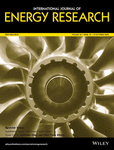A parametric study of laminar convective heat transfer in fractal minichannels with hexagonal fins
Summary
The excess heat generated by the modern electronic components and devices leads to a sustained growth in demand for thermal management technologies. Inspired by the features of fractal structures in terms of the periodical interruption of boundary layer and the strong flow mixing, a parametric study is carried out to study the flow and heat transfer performance in the fractal minichannels configured with hexagonal fins. A dimensionless performance factor involving average Nusselt number and average friction factor is defined to evaluate the overall performance with considering heat transfer enhancement and additional friction loss. The parametric effects of branching angle θ (60°-120°) and relative hexagonal side length α (1.00-2.00) on laminar hydrodynamics and thermal characteristics in the proposed minichannels are numerically investigated for Reynolds number ranged from 50 to 550. The results emphasize a lower temperature and more uniform temperature distribution on the bottom surface and an advantage of overall performance for the fractal minichannel with hexagonal fins over the conventional straight minichannel. It is noted from the results that the variation of branching angle possesses little effect on the maximum temperature and temperature uniformity of the bottom surface. On the basis of the evolution of the performance factors, the best performance is obtained by the branching angle of 60° and the relative hexagonal side length of 1.50 among the tested configurations, and the maximum temperature and temperature uniformity of the bottom surface are reduced by 16.4 K and 84%, respectively, when comparing with the straight channel as the reference object. This study verified the theoretical conjecture that the application of hexagonal fins in minichannel plays an important role in effectively improving heat transfer in the case of controllable pressure loss.




